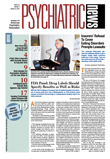Psychiatric, rehabilitation, and alcohol/drug treatment centers are among the medical facilities that will need to ensure that their training complies with new federal guidelines on the use of seclusion and restraint.
The Centers for Medicare and Medicaid Services (CMS) published a final rule last month governing the use of seclusion and restraints by physicians and health care workers who treat patients in hospitals that participate in Medicare or Medicaid.
The regulations, which go into effect on February 6, establish more rigorous training requirements that aim to assure appropriate treatment and protect patients' rights.
The regulations are part of Medicare's revised conditions of participation (CoPs) in the Medicare and Medicaid programs and apply to a wide range of settings including short-term, psychiatric, rehabilitation, long-term, pediatric, and substance abuse treatment facilities.
“Through this regulation, CMS will hold all hospitals accountable for the appropriate use of restraint and seclusion,” said Leslie Norwalk, acting administrator of CMS. “Today's action reinforces this administration's commitment to patient safety and the delivery of high-quality health care services.”
The final regulation strengthens staff-training standards and details aspects of the training. It expands the category of practitioners who may conduct patient evaluations when a restraint or seclusion strategy has been implemented.
Patients to Be Notified of Rights
The regulation also details several patients' rights. These include the right to be informed by hospital staff of all issues relevant to their care and rights to privacy and safety, confidentiality of medical records, and freedom from the inappropriate use of restraints and seclusion.
The new regulations also have strict standards that govern when a health care facility must report deaths that may be associated with the use of restraint and seclusion.
“Today, we are taking needed steps to solidify training requirements and essential reporting to reduce and ultimately eliminate seclusion and restraints,” said Eric Broderick, acting deputy administrator of the Substance Abuse and Mental Health Services Administration (SAMHSA), in a statement issued in conjunction with the regulations.
A report issued by the General Accountability Office in September 1999, documented dangers associated with the inappropriate use of restraint and seclusion. It noted, for example, that children are subjected to seclusion and restraint at higher rates than adults and are at greater risk of serious injury or death as a result of improper restraint and seclusion practices.
Other recent federal actions in this area include development of first-of-their-kind guidelines by SAMHSA in June 2006, which aimed to help mental health facilities train staff in alternatives to seclusion and restraint (Psychiatric News, July 7, 2006).
Years of Comments Make Impact
The final regulations were seven years in the making. An interim final rule drew more than 4,000 public comments since it was published in July 1999.
APA, which submitted comments on the interim rule, has been active on the issue and developed a publication in 2003 that described strategies for reducing the use of seclusion and restraint. The 42-page booklet, titled“ Learning From Each Other: Success Stories and Ideas for Reducing Restraint/Seclusion in Behavioral Health,” was created by APA, the American Psychiatric Nurses Association, and the National Association of Psychiatric Health Systems, with support from the American Hospital Association's Section for Psychiatric and Substance Abuse Services (Psychiatric News, February 7, 2003).
In response to public comments, for example, CMS revised the regulation to expand staff training requirements and added a requirement that once trained in seclusion and restraint practices, registered nurses or physician assistants who may implement those interventions must consult the attending physicians or other licensed independent practitioner responsible for the patient's care as soon as possible when a restraint-or-seclusion evaluation of a violent or self-destructive patient is conducted.
The new regulations do not ban the use of restraint or seclusion. However, they prohibit use of restraint or seclusion when it is “imposed as a means of coercion, discipline, convenience, or retaliation by staff.”
The regulation defines restraints as “any manual method, physical or mechanical device, material, or equipment that immobilizes or reduces the ability of a patient to move his or her arms, legs, body, or head freely; or a drug or medication when it is used as a restriction to manage the patients' behavior or restrict the patient's freedom of movement and is not a standard treatment or dosage for the patient's condition.”
